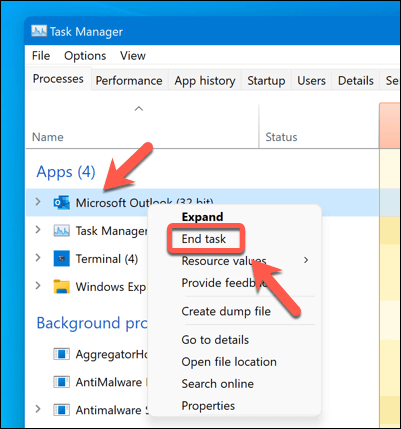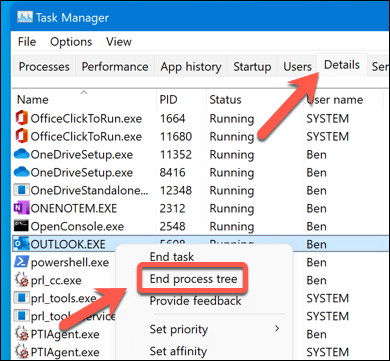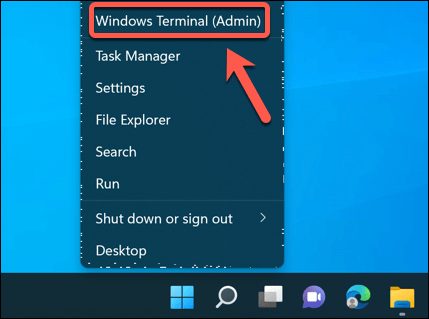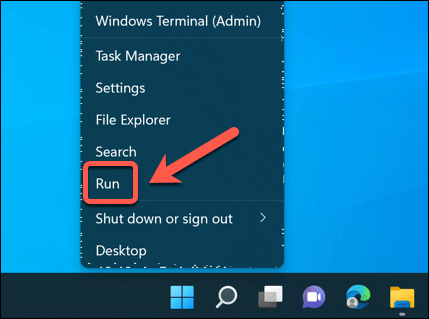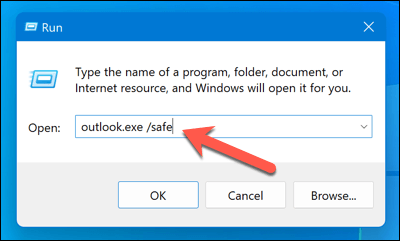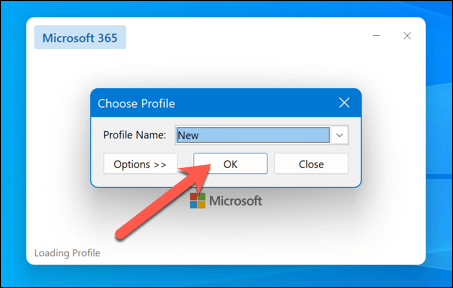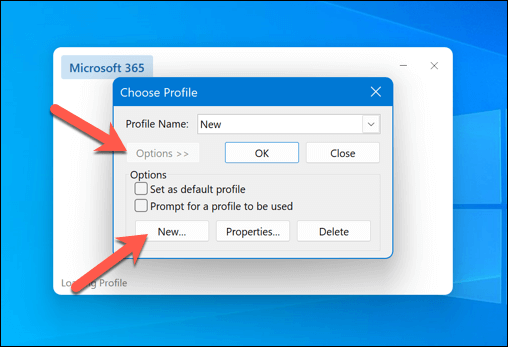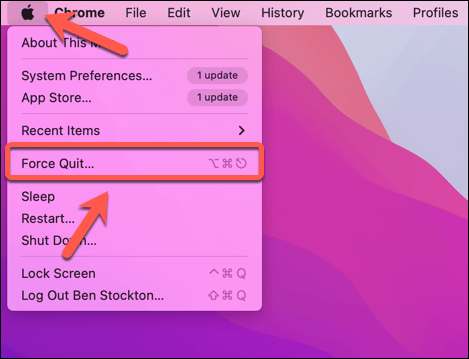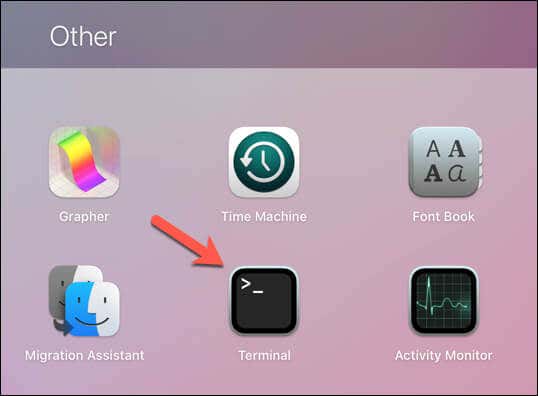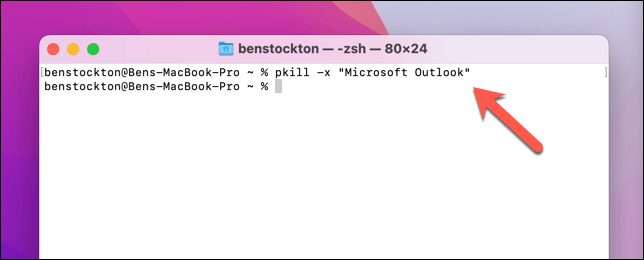Plus, how to troubleshoot common issues
If you use Microsoft Outlook as your email client, you know how important it is to keep it running smoothly. If Outlook stops working, it might mean your ability to respond to important email messages from colleagues and friends is restricted.
Thankfully, most minor issues with Outlook can be resolved with a quick restart. We’ll show you how to restart Microsoft Outlook when it stops working on Windows and Mac below, along with some common Outlook problems that you can troubleshoot.
How to Restart Outlook on Windows
If Outlook stops working on your Windows computer, the first thing you should try is to restart it. This can often fix minor glitches and errors that cause Outlook to malfunction.
If you’re having trouble restarting Outlook, here are a few different methods you can try on a Windows PC.
Using Task Manager
- Right-click the Start menu and select Task Manager from the menu that appears.
- In the Task Manager window, find Outlook in the list of processes and right-click on it.
- Select End task from the context menu. This will close Outlook forcefully.
- If this doesn’t work immediately, switch to the Details tab, locate the outlook.exe process, right-click it, and select End Process Tree instead.
- Restart Outlook by launching it again via the Start menu.
Using Windows Terminal
- Right-click the Start menu and select Window Terminal (Admin).
- Type taskkill /im outlook.exe and press Enter. This will send a signal to Outlook to terminate it immediately.
- You can also use taskkill /f /im outlook.exe to force Outlook to close without saving any changes.
- Once Outlook has closed, launch it again via the Start menu.
Using a Run Command
- Press the Windows key + R on your keyboard to open the Run dialog box. Alternatively, right-click the Start menu and select Run.
- Type outlook.exe /resetnavpane in the box and press OK. This will reset the navigation pane for your current Outlook profile, forcing the application to restart in the process.
How to Restart Outlook in Safe Mode on Windows
Safe mode is a barebones version of Outlook that you can launch if there’s a problem. Outlook in safe mode will load without add-ins or other customizations, allowing you to roll back any changes that you’ve made previously.
Safe mode is only a feature available for Windows users. To restart Outlook in safe mode on a Windows PC, follow these steps.
- Press the Windows key + R on your keyboard to open the Run dialog box. Alternatively, right-click the Start menu and press Run.
- Type outlook.exe /safe and press OK.
- You’ll see a window asking you to choose a profile. Select the default profile (if it’s working) and click OK.
- If your default profile isn’t working, press Options > New and create a new user profile to use instead. You’ll need to sign in to your email account again during this process.
Outlook will then launch in safe mode. If you’re unsure whether or not Outlook is running in this mode, check the Outlook title bar—it’ll say (Safe Mode) in the title.
How to Restart Outlook on a Mac
If Outlook stops working on your Mac, you can also try to restart it using one of these methods.
Using Force Quit
- Open the Apple menu in the top-left corner of your macOS screen and select Force Quit.
- Alternatively, press Option + Command + Esc on your keyboard.
- In the Force Quit window, find Outlook in the list of applications and click on it.
- Press the Force Quit button at the bottom of the window. As the name suggests, this will force Outlook to close.
- Restart Outlook by clicking on its icon in the Dock or in the Applications folder.
Using Terminal
- Open the Terminal app via the Other folder in the Launchpad or from your Applications folder on macOS.
- In Terminal, type pkill -x “Microsoft Outlook” and press Enter. This will send a signal to Outlook to terminate it.
- You can also use pkill -QUIT -x “Microsoft Outlook” to send a more graceful signal that allows Outlook to perform some cleanup tasks before quitting.
- Restart Outlook by selecting the icon for it from the Launchpad, from your Dock icons, or via the Applications folder in Finder.
How to Troubleshoot Outlook Issues
If restarting Outlook doesn’t solve your problem, you may need to troubleshoot further and find out what’s causing Outlook to crash or stop responding. Here are some common troubleshooting steps you can try:
- Restart your computer: Sometimes, a simple restart can fix many issues with Outlook and other programs. Save your work, close all the applications you are using, restart your computer, and open Outlook again.
- Update Outlook: Make sure you have the latest version of Outlook installed on your computer. You’ll need to check your current Office version first.
- Disable add-ins: Add-ins can sometimes cause conflicts or errors with Outlook. If you start Outlook in safe mode, you can determine if add-ins are causing you issues and disable them. Restart Outlook using the steps above and see if the problem persists afterward.
- Repair your Outlook PST file: Outlook has built-in tools to help you repair your PST file. This is the file that contains your messages and settings. Use the Outlook Inbox Repair tool to help you repair these files, then restart your PC or Mac and see if the problem is resolved.
How to Fix Outlook Issues
If Outlook isn’t working, you’re not working. Thanks to the steps above, you can quickly restart Microsoft Outlook on your Windows PC or Mac to resolve minor issues.
However, if Outlook still isn’t working, you’ll need to look more closely at any issues you have. For instance, a slow loading Outlook client could be resolved by disabling add-ons and reducing the size of your PST file.
A problem with Outlook could be a symptom of wider problems with your Office installation. If that’s the case, you’ll need to repair your Office installation to resolve the problem.




